Java List遍历删除元素 Java中List遍历删除元素remove()的方法
素小暖 人气:0今天碰见根据条件进行list遍历remove的问题,第一时间就是简单for循环remove,只知道这么写不行,不安全,可是为什么呢?你想过吗?下面就关于List遍历remove的问题,深挖一下!
一、几种常见的遍历方式
1、普通for循环
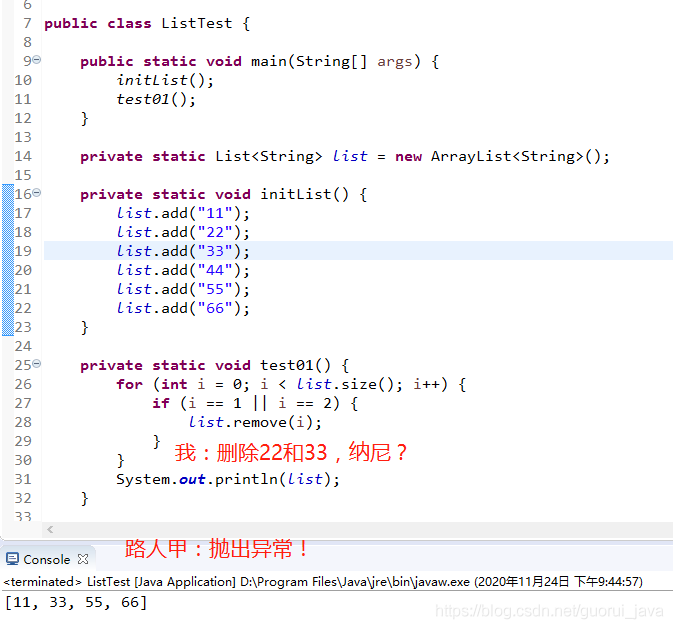
2、高级for循环
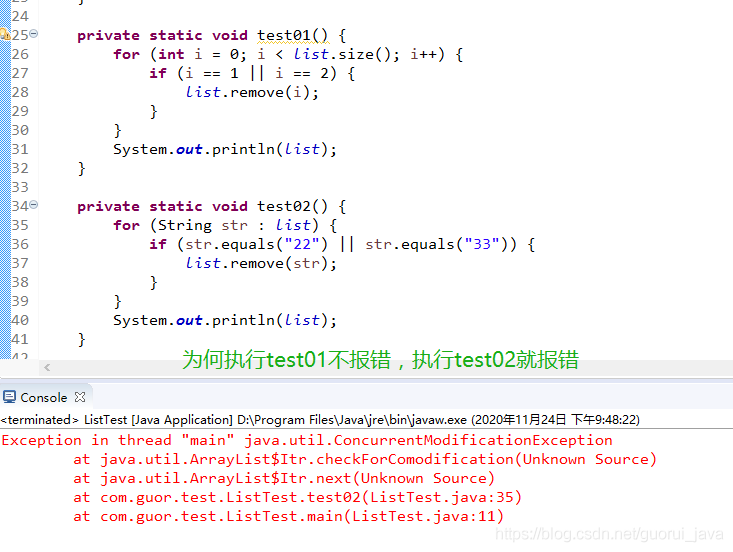
3、iterator和removeIf
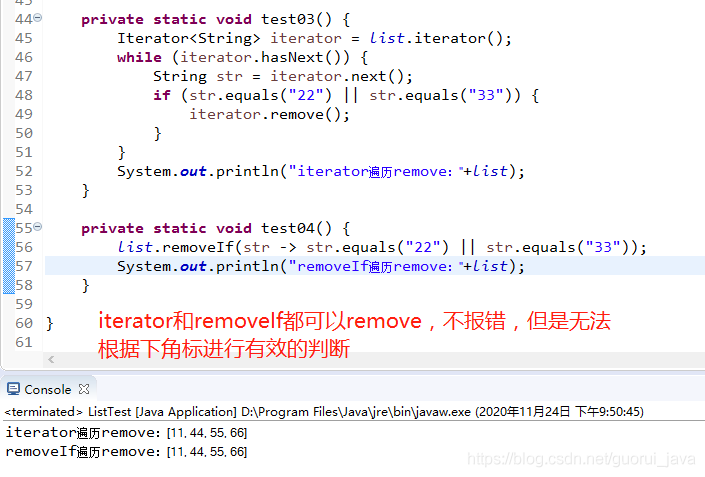
4、stream()

5、复制

6、普通for循环 --> 倒序方式
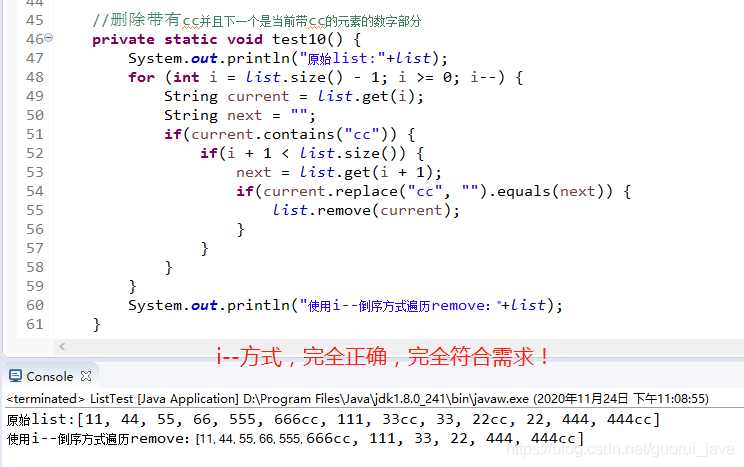
二、源码篇
1、普通for循环出错原因
public boolean remove(Object o) {
if (o == null) {
for (int index = 0; index < size; index++)
if (elementData[index] == null) {
fastRemove(index);
return true;
}
} else {
for (int index = 0; index < size; index++)
if (o.equals(elementData[index])) {
fastRemove(index);
return true;
}
}
return false;
}
/*
* Private remove method that skips bounds checking and does not
* return the value removed.
*/
private void fastRemove(int index) {
modCount++;
int numMoved = size - index - 1;
if (numMoved > 0)
//remove会导致之后的元素往前移动,而下标不改变时就会出现bug
System.arraycopy(elementData, index+1, elementData, index,
numMoved);
elementData[--size] = null; // clear to let GC do its work
}
我们在删除某个元素后,list的大小发生了变化,这时候你的的索引也会发生变化,这时就会导致你在遍历的时候漏掉某些元素。
比如当你删除第1个元素后,我们如果还是继续根据索引访问第2个元素时,因为删除的关系,后面的元素都往前移动了一位,所以实际访问的是第3个元素。
所以这种方式可以用在删除特定的一个元素时使用,但不适合循环删除多个元素时使用。
2、高级for循环出错原因
foreach其实是用迭代器来进行遍历的,而在遍历时直接使用arraylist的remove方法会导致什么问题呢?
可以再看一下fastremove和迭代器遍历的内部代码:
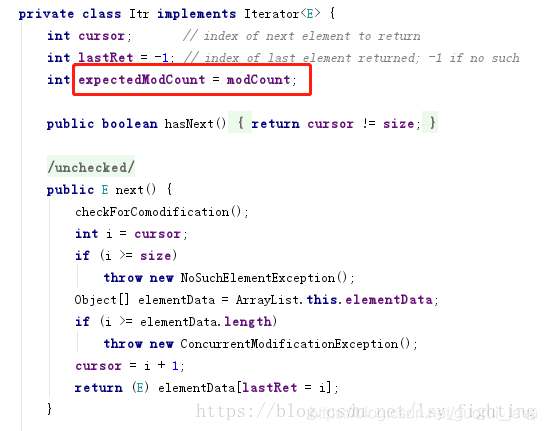
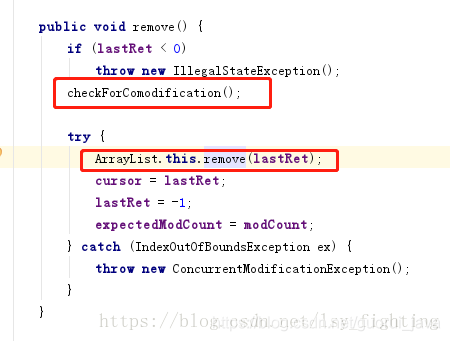
最后导致抛出上面异常的其实就是这个,简单说,调用list.remove()方法导致modCount和expectedModCount的值不一致而报异常
final void checkForComodification() {
if (modCount != expectedModCount)
throw new ConcurrentModificationException();
}
//调用next时会调用checkForComodification方法检查 这两个字段
//而fastRemove里面只对modCount 进行了改变 导致抛出异常
public E next() {
checkForComodification();
int i = cursor;
if (i >= size)
throw new NoSuchElementException();
Object[] elementData = ArrayList.this.elementData;
if (i >= elementData.length)
throw new ConcurrentModificationException();
cursor = i + 1;
return (E) elementData[lastRet = i];
}
所以遍历时remove并不适用于foreach。
3、java8中新方法removeIf
//内部其实就是迭代器遍历
default boolean removeIf(Predicate<? super E> filter) {
Objects.requireNonNull(filter);
boolean removed = false;
final Iterator<E> each = iterator();
while (each.hasNext()) {
if (filter.test(each.next())) {
each.remove();
removed = true;
}
}
return removed;
}
和迭代器差不多,内部实现也是迭代器。
三、总结
1、在不考虑内存大小会不会出现OOM的时候,采取复制一个新的list的方法速度更快,适用于集合中对象不算多的时候,毕竟只需要add操作。
2、当集合中元素过多时,复制list就显得有些笨重了,采用迭代器的方式进行遍历较快一些,并且不用关注小角标的变化。
3、不考虑性能的时候使用removeIf方法,代码简洁明了。
4、当要针对角标进行元素的remove时,使用倒序遍历的方式最为妥当。
加载全部内容